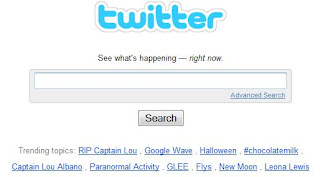This year Technorati has rolled out their "State of the Blogosphere" in a five-part series. They'll be posting one part every day throughout this week. Thus far, they have posted "Who Are the Bloggers?" and "The What and Why of Blogging."
These two parts alone have a host of information to digest, critically analyze and apply to your social media knowledge. In an effort to highlight the most important stuff, I'll be breaking down the info and asking a few questions along the way.
Methodology:
Technorati collected data from Penn, Schoen and Berland Associates who conducted a survey of 2,828 bloggers nationwide. They also gathered data from 11,000 active Lijit publishers (bloggers using the Lijit search widget) and 2.5 million blogs connected by link to these Ligit bloggers. This data collection method is somewhat biased because it takes a certain type of blogger to decide to download a Lijit widget. It becomes immediately less likely that casual bloggers or bloggers who see no value in Lijit can contribute their input to the survey. The correction for this of adding blogs who are linked to Lijit users helps a fair amount but still isn't an entirely valid and random representation of the blogoshpere.
Realisticially, it would be an enormous undertaking to get a representative and random sampling of blogs so I can't complain too much about their choice of blogs.
Major Points:
1. The state of the blogosphere is strong
2. There are 4 types of bloggers
- Hobbyists: 72%- This group blogs for fun and don't make any money from blogging
- Part-Timers: 15%- They blog to supplement their income, but don't use blogging as a full-time job
- Self Employeds: 9%- People who blog full-time for their company or organization
- Pros: 4%- Also listed as blogging full-time for their company or organization, but apparently don't blog as many hours per week
3. Bloggers are educated and in good standing financially:
- 1/3 of respondents has a household income of over $75K
- 75% of bloggers have a college degrees
- 40% have graduate degrees
4. People who have worked in traditional media are migrating towards blogs. 35% of all respondents have worked within the traditional media as a writer, reporter, producer or something else
5. Bloggers are beginning to use mobile devices to blog, but it is still not a common practice:
6. There is a significant increase in professional blogging. This means blogging for the purpose of gaining income, business connections and increased revenue is on the rise.
7. Blogging has been beneficial to individuals careers and work goals. 58% of respondents said they are better-known in their industry solely because of the blog.
8. The volume of blogging is on the rise. 57% said they plan to blog even more moving forward, which included 74% of 18-24 year olds.
My Observations:
1. The growing number of "professional" bloggers is changing the face of blogging as we have known it for the last 10 years. Technorati asserted that only 36% of of professional bloggers discuss the political and social implications of their topics. The topical and neutral stances of professional bloggers have created a trend of less emotional, opinionated posts, which is what blogging was founded upon. I'm a professional in the social media world so I understand the idea of professional blogging, but I would hate to lose the passion and opinions that blogging is synonymous with.
2. Technorati tried to play to the dichotomy between traditional and social media with survey questions lke "are blogs better written then traditional media?" Bloggers didn't fall into the trap. Based on Technorati's data, bloggers were resistant to the notion that trditional media is either failing or decreasing it's content quality. Its important that a mutual respect remains present between the two parties because as each day passes the lines become more blurred.
3. Technorati found that "30% of those who are blogging less say it's because they are devoting more time to microblogging and social networks." In other words, bloggers are writing less because they are networking and having fun on sites like Twitter and Facebook. This is a very important trend. Does this mean that blogging is on the decline? Are other platforms rising up to destroy the blogosphere? I'm pretty sure the answer is "No." Other platforms are actually being tied into the blogosphere to help promote individual blogs. Twitter and Facebook updates are riddled with links to blog posts. Still, the next wave of technology could make blogging a pastime much in the way of chat rooms.
Technorati has been struggling to regain some of the prominence it once had. This report provides great data for all those marketers and social media junkies out there, but is it enough to bring Technorati to the top again? I guess we will have to wait and see what the next three parts of the report have to say.








